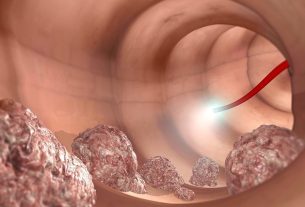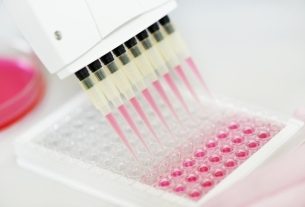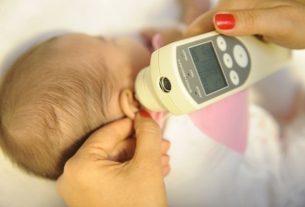CA 19-9 is a protein released by cells in some types of tumor and is therefore used to aid in the diagnosis of some types of cancer, such as pancreatic, liver, gallbladder or colorectal cancer, as it can have high levels under these conditions.
However, levels of the CA 19-9 tumor marker can also indicate other diseases not related to cancer, such as pancreatitis, gallbladder stones, cirrhosis of the liver or cystic fibrosis, for example.
The CA 19-9 test is simple and is performed by collecting a blood sample that is analyzed in the laboratory, and the results must be interpreted by the oncologist.

What is it for
The CA 19-9 exam is indicated to assist in the diagnosis of:
- Pancreatic cancer;
- Colorectal cancer;
- Gallbladder cancer;
- Liver cancer.
Furthermore, in addition to assisting in diagnosis, the CA 19-9 test allows the doctor to evaluate the response to cancer treatment, since CA 19-9 levels tend to increase with tumor growth and reduce as the tumor grows. the tumor shrinks.
CA 19-9 may also be requested in the case of suspected pancreatitis, cystic fibrosis, gallstones, cholecystitis, or liver cirrhosis, and may be increased in these situations.
Make an appointment with an oncologist in the nearest region:
Taking care of your health has never been easier!
When the exam is necessary
The CA 19-9 test is usually requested when symptoms appear that may indicate cancer in the gastrointestinal tract, such as frequent nausea, swollen belly, weight loss, yellowish skin or abdominal pain. Check out the main symptoms that may indicate cancer and which tests are used.
In addition to the CA 19-9 test, others can also be carried out that help to specifically identify the type of cancer, such as the CEA test, bilirubin and, sometimes, tests that evaluate the liver. See what liver function tests are.
Furthermore, this exam can be repeated even after a cancer diagnosis has already been made, being used as a point of comparison to find out whether the treatment is having any results on the tumor.
How the exam is carried out
The CA 19-9 exam is performed like a normal blood test, in which a blood sample is collected and sent to the laboratory for analysis. No specific preparation is necessary for this type of clinical analysis.
CA 19-9 reference values
Os Normal reference values for CA 19-9 are up to 37 U/mL. Results above 37 U/mL may indicate the presence of cancer, and normally in pancreatic cancer the values are greatly increased.
Furthermore, CA 19-9 values above 37 U/mL may also indicate other health conditions, such as pancreatitis, bile duct obstruction or liver cirrhosis, for example.
How to understand the results
The results of the CA 19-9 exam must be interpreted by the doctor, along with other requested tests.
After the first exam, the test can be repeated several times to check the effectiveness of the treatment, which may indicate:
- CA 19-9 is increasing: it means that the treatment is not having the expected result and, therefore, the tumor is increasing, leading to greater production of CA 19-9 in the blood;
- CA 19-9 remains: it may indicate that the tumor is stable, that is, it does not grow or shrink, and may indicate to the doctor the need to change the treatment;
- CA 19-9 is decreasing: It is generally a sign that the treatment is being effective and that the cancer is reducing in size;
- CA 19-9 decreased after treatment, but then increased again: may indicate that the cancer has returned or grown.
In some cases, the result may increase over time even if the cancer is not actually increasing in size, but this is usually more common with radiotherapy treatments.
Bibliography
- SCARÀ, S.; et al. CA 19-9: Biochemical and Clinical Aspects. Adv Exp Med Biol. 867. 247-60, 2015
- GALLI, C.; et al. CA 19-9: handle with care. Clin Chem Lab Med. 51. 7; 1369-83, 2013
- MEIRA-JÚNIOR, JD; et al. Elevated CA 19-9 in an asymptomatic patient: what does that mean?. . . . Arch Brace Circle Di. 35. e1687,

Sign up for our newsletter and stay up to date with exclusive news
that can transform your routine!
Warning: Undefined array key "title" in /home/storelat/public_html/wp-content/plugins/link-whisper-premium/templates/frontend/related-posts.php on line 12
Warning: Undefined array key "title_tag" in /home/storelat/public_html/wp-content/plugins/link-whisper-premium/templates/frontend/related-posts.php on line 13



